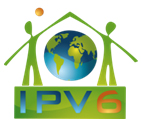IPv6 benefits

By 2020, the Internet of Things (IoT) will interconnect 50 Billion smart things. However, it is still fragmented in many different communication protocols with limited interoperability. Device Gateway approach relies on the integration of a heterogeneous Internet of Things into IPv6 and Cloud-based Services.
The Internet started back in 1969 with ArpaNET. In 1981, the Internet adopted the Internet Protocol version 4 (IPv4), and was opened to the public a few years latter. Since then the Internet has grown on the same protocol version (IPv4). In 1993, the Internet Engineering Task Force started to work on a new protocol: Internet Protocol version 6 (IPv6). The IPv6 standardisation was finished in 1998. The following year, its deployment has started in Asia, followed by the US and Europe. IPv6 will deeply impact the Future Internet,- as underlined by the EC Communication on IPv6 , and the OECD Seoul Declaration on the Future of the Internet. IPv6 will provide an easier remote interaction with each and every device with a direct integration to the Internet. In other words, IPv6 will make possible to move from a network of servers, to a network of things.
The current 4 billion IPv4 addresses are largely exhausted , - making the transition from IPv4 to IPv6 ineluctable. IPv6 is integrated into Microsoft, Linux, Mac and Android OS, as well as in all professional networking equipment. The global Internet backbones and the top domain names servers are IPv6 compatibles too, and ready for the transition. Many countries, including US, China, India, Japan, South Korea and European countries are actively promoting the transition to IPv6. IPv6 brings several advantages, including:
More importantly, the ongoing work to improve standards and solutions of Internet related protocols and security mechanisms are now focused on IPv6. IPv4 deployments will not benefit from the on-going improvement of the Internet architecture and will face an increasing number of enablers that will become deprecated.
The current 4 billion IPv4 addresses are largely exhausted , - making the transition from IPv4 to IPv6 ineluctable. IPv6 is integrated into Microsoft, Linux, Mac and Android OS, as well as in all professional networking equipment. The global Internet backbones and the top domain names servers are IPv6 compatibles too, and ready for the transition. Many countries, including US, China, India, Japan, South Korea and European countries are actively promoting the transition to IPv6. IPv6 brings several advantages, including:
- Scalability with a very large IPv6 address space (2128 addresses), enabling to provide unique and permanent IP addresses to each and every device.
- Address self-configuration mechanisms, (SLAAC) easing and reducing costs of deployment.
- Improved security and authentication features, such as mandatory IPSec capacities and the possibility to use of the address space to include encryption keys.
- End-to-end connectivity with real authentication (NAT free).
- Security (IPSec, etc.)
- Mobility features, enabling a seamless connexion when moving from one access point to another access point on the Internet.
- Multicast and any-cast functionalities.
- Fully Internet compliant with a global deployment and accessibility
More importantly, the ongoing work to improve standards and solutions of Internet related protocols and security mechanisms are now focused on IPv6. IPv4 deployments will not benefit from the on-going improvement of the Internet architecture and will face an increasing number of enablers that will become deprecated.

Smart IPv6 buildings
By enabling the extension of the Internet to any device, IPv6 will also turn buildings into smarter and more interconnected environments. Progresses in nanotechnology enable more and more pervasive intelligence and ICT solutions to be deployed. Improving the Internet of things in homes can contribute to save energy, increase comfort and security, and support elder people - with important related markets opportunities. IPv6 can bring several advantages for smart buildings. IPv6 can:- Increase the granularity of building control and monitoring, by addressing each and every sensor, device and actuator with its own IP address.
- Ease the deployment of automated devices, with the self-configuration of the IP addresses.
- Improve security of the connectivity to the devices, in particular for remote control.
IPv6 constitutes a great opportunity and a new frontier for smart and green buildings. The Device Gateway technology interconnect and integrates heterogeneous subsystems of buildings using different communication protocols and standards into IPv6 and a common semantic framework. It paves the way to new forms of interactions, by enabling heterogeneous devices such as mobile phones, RFID tags, ZigBee sensors, KNX actuators and DLNA screens to interact with each others. It transforms buildings into smarter, more integrated and "user-friendly" environments.
